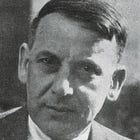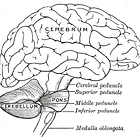Commentary on Orage's "HOW TO LEARN TO THINK"
Going from thinking to Thinking - picturing, remembering and constating.
A reminder that these articles assume background knowledge of Gurdjieff's writings and the secondary literature. Please see Introduction and Bibliography for guidance, and for full citations of abbreviated references.
Continuing from:
Related article:
In this post, and others, a deeper understanding is sought of the energies and stations of "the three storey factory," as they might be called. For a time, Orage's interpretation of Gurdjieff's teaching will be used as a major means by which to try to fathom the gist of what Gurdjieff is saying.
Here we take the first essay of the fifteen Psychological Essays of Orage. With such a title, How to Learn to Think, one might imagine finding instructions in it on techniques of thinking. But this is not so. It turns out that the simple, though not easy, basis for exercises that is given in the essay is for developing concentration, or “thought-power,” as Orage calls it.1 It’s notable that the title says “How to learn to think” rather than “How to think.” In the next essay (The Control of Temper), he also talks of "muscular development of our thought-power, such as only special training can bring about."2 How to Learn to Think seems a preliminary approach to such “muscular development.” So, it is the power of concentration of thought being trained rather than the thought itself. How to think depends first on the power to think. Yet, even "to think" may not be what we expect.
Capacity to think, depends, among other things, upon the amount and type of energy available for thinking – "thought-power." In the basic training he recommends in this short essay, Orage is fostering an attempt at maximum possible use of the mental energy that is available, for a definite short period of time – "Two or three minutes at a time is enough"3 – but repeatedly, "whenever you have a spare minute."4 Because our thought-power, in the absence of training, tends to be weak, the seemingly available energy may not initially seem up to the task when the layers of further challenges are added. Apart from the difficulties of performing the exercise itself, there are the challenges that may appear after a while, or which may even be present at the beginning, particularly, lack of interest, boredom and descent into mechanicality. The issue of any exercise inevitably becoming mechanical, unless means are deliberately applied to counteract this, is an important one. Yet our automatism can also help us. It is the very interplay of conscious action and later automatic action5 that is the functioning upon which inner growth and consciousness is made possible and manifested.6 Neglecting the work of repeated renewing of conscious attention to the task, the line of force will go downward. Neglecting the role of the automatism, by not resting and relaxing fully, and not respecting the need for periodicity of work and rest,7 deprives the whole of the harmonising effect of rest after a period of intense activity, and tends to disorder in the functions of "the machine,"8 and the disease of lopsidedness.9





